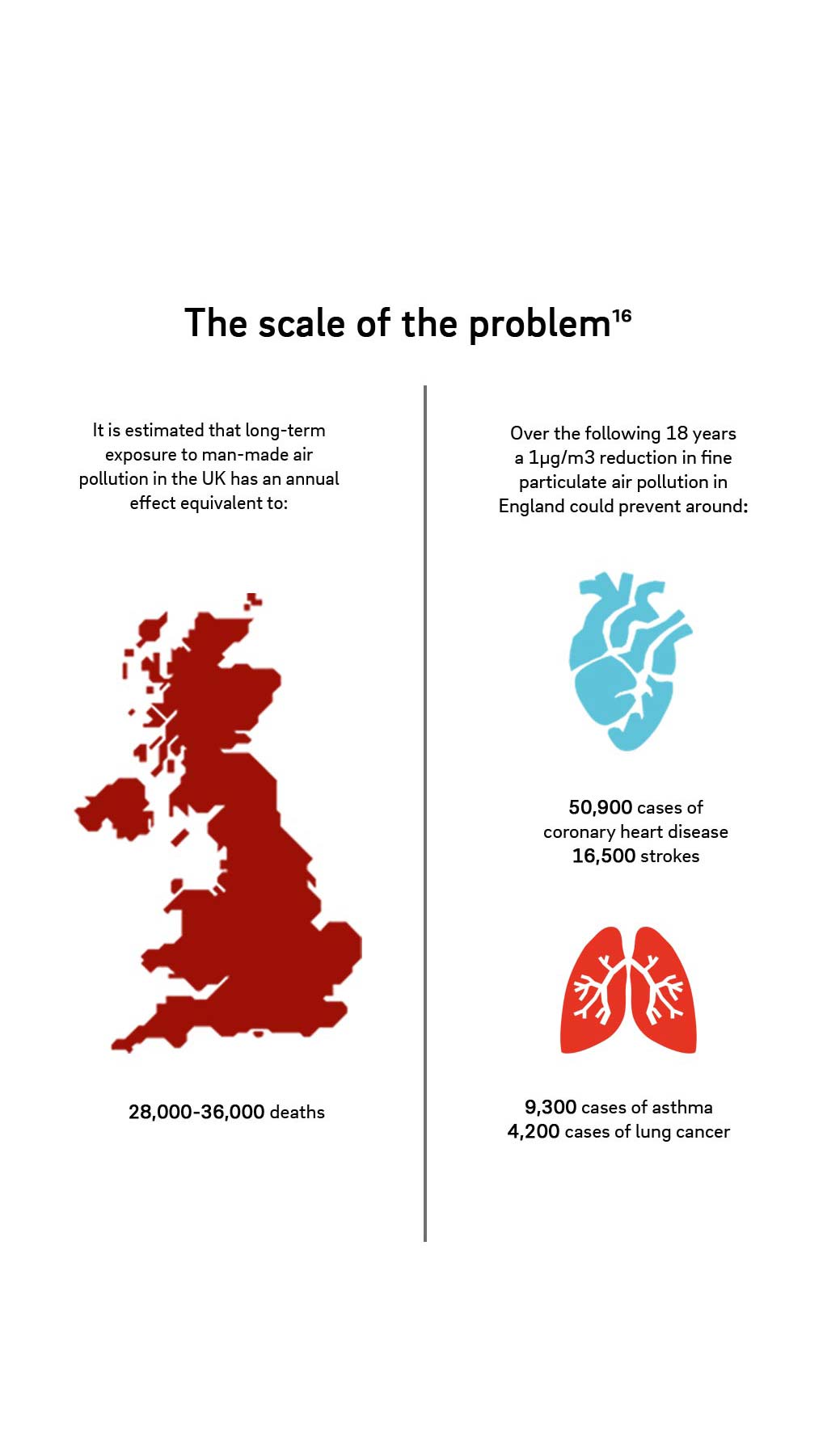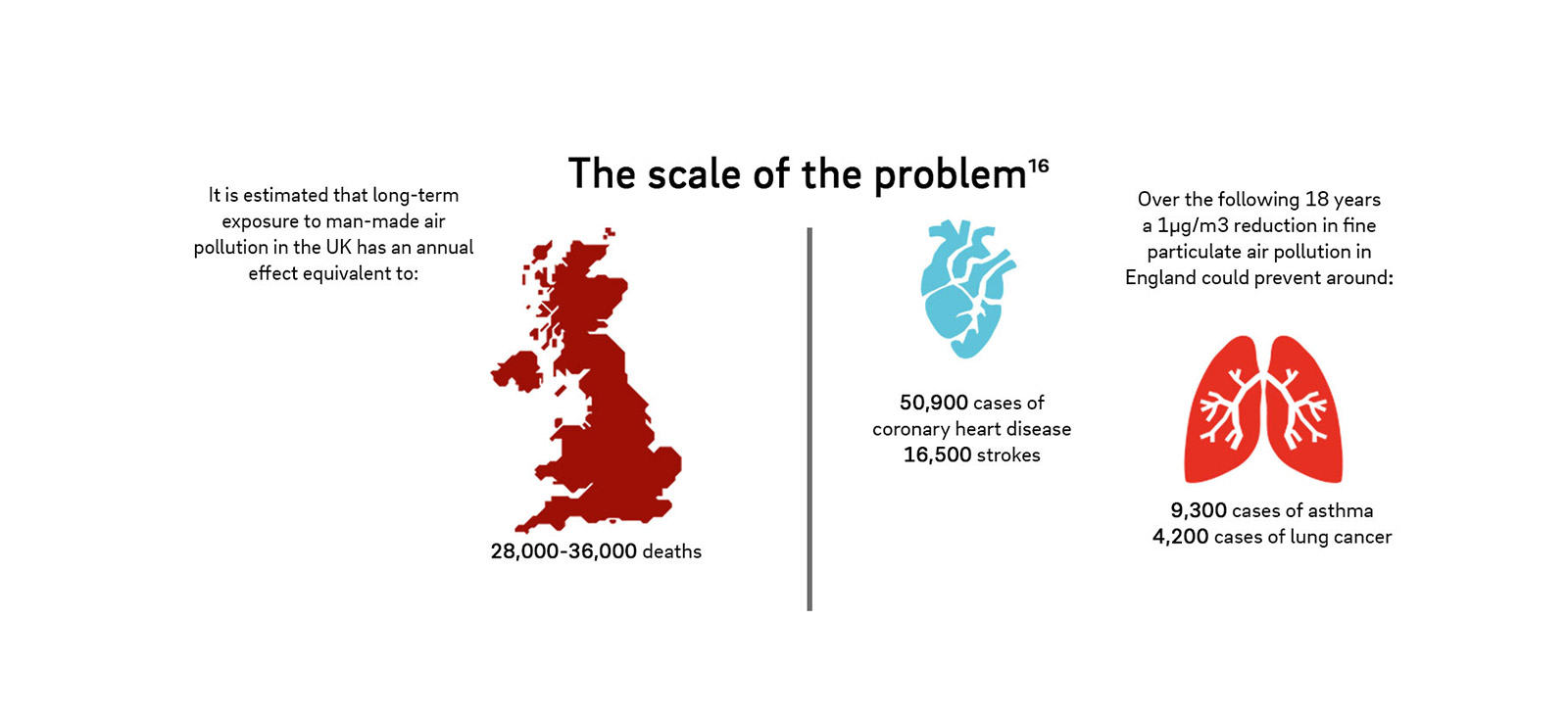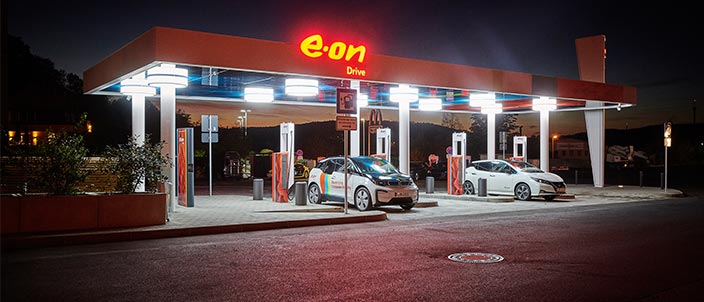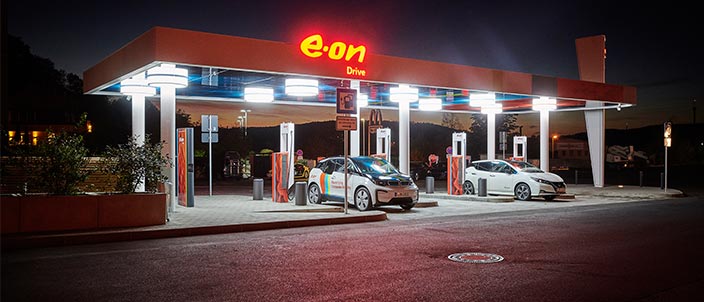



The white paper - an introduction
The State of Global Air8 report this year suggests one death in ten worldwide is caused by air pollution-related disease, making it a bigger killer than malaria and road accidents.9 In Asia, children can expect to have their lives shortened by 20 months because of pollution.10
Air pollution has a significant effect on public health, and poor air quality is the largest environmental risk to public health in the UK, associated with asthma, heart disease, even elevated levels of psychosis and ranking only after cancer, heart disease and obesity.11 We know from studies that long-term exposure to air pollution reduces life expectancy, mainly due to cardiovascular and respiratory diseases and lung cancer.12
However, Public Health England also highlights that even short-term exposure to elevated levels of air pollution can cause a range of health impacts including effects on lung function, exacerbation of asthma, increases in respiratory and cardiovascular hospital admissions and mortality.13


Air pollutants are emitted from a range of both man-made and natural sources. A range of sectors, including transport, industrial processes, energy generation and domestic heating, can all have a detrimental effect on air quality14
Tackling this can deliver significant positive health benefits for society. The UK Health Forum and Imperial College London, in collaboration with Public Health England, developed a model that estimates a 1 μg/m3 reduction in fine particulate air pollution in England could prevent around 50,900 cases of coronary heart disease, 16,500 strokes, 9,300 cases of asthma and 4,200 cases of lung cancer over an 18-year period.15
Particulate matter (PM) and nitrogen dioxide (NO2) are both major components of urban air pollution.17PM is a generic term used to describe a complex mixture of solid and liquid particles, some of which are emitted directly whilst others are formed in the atmosphere through complex chemical reactions. The composition of PM varies greatly and depends on many factors, such as geographical location, emission sources and weather. The main sources of man-made PM are the combustion of fuels (by vehicles, industry and domestic properties) and other physical processes such as tyre and brake wear.
Pollutants can travel long distances and combine with each other to create different pollutants. Emissions from distant and local sources can build up into high local concentrations of pollution.
NO2 is a gas that is produced along with nitric oxide (NO) by combustion processes. Together they are often referred to as oxides of nitrogen (NOx). Defra estimates that 80% of NOx emissions in areas where the UK is exceeding NO2 limits are due to transport,18with the largest source being emissions from diesel light-duty vehicles (cars and vans).19Other sources include power generation, industrial processes and domestic heating.
Primary particulate matter (PM2.5) are tiny particles from smoke, soot and dust that can get into the lungs and bloodstream, transported around the body and embedded in organs. Those more likely to be affected are people already suffering from lung and heart conditions, elderly people, the very young and pregnant women and their unborn babies.
Eight out of ten people in the UK now live in cities,20 with around 13%21 of the UK population living in the capital. Urban populations are likely to continue to grow, meaning the challenge facing governments at national and local levels is ensuring these cities are sustainable and, equally, liveable.
In this report we have chosen to focus on two of the main pollutants, primarily driven by home and business energy use and road transport: nitrogen oxides (NOx) and fine particulate matter (PM2.5).
On the positive side, we have seen reductions in both of these areas since 1970. Nitrogen oxides are down in the UK by more than 70%, whilst fine particulate matter is down by almost 80%.22
While this is good news, there is still much more progress that needs to be made over the coming years, and we all have a role to play.
Energy producers can lead the way by replacing fossil fuels23 with renewables and low carbon clean power. Solar and wind capacity has grown considerably in the UK over the last decade, and in 2018 the energy capacity of renewables in the UK overtook fossil fuels for the first time.
Homeowners and landlords can play a role in decarbonisation – through greater electrification – for millions of homes in the UK, particularly those which currently use liquified petroleum gas, coal or oil as their primary heating source. They can save money and help the environment with ever greater standards of energy efficiency, better heating controls that save on fuel bills and give greater comfort, more cost and carbon efficient heating systems, as well as domestic solar and battery storage.
Lastly, the business community can also be at the forefront of solutions. The built environment sector is responsible for approximately 40%24 of the UK’s carbon emissions each year meaning there are potentially significant reductions which can be achieved for example by embracing smart controls, waste heat recycling, on-site generation and flexibility, and efficient design.









